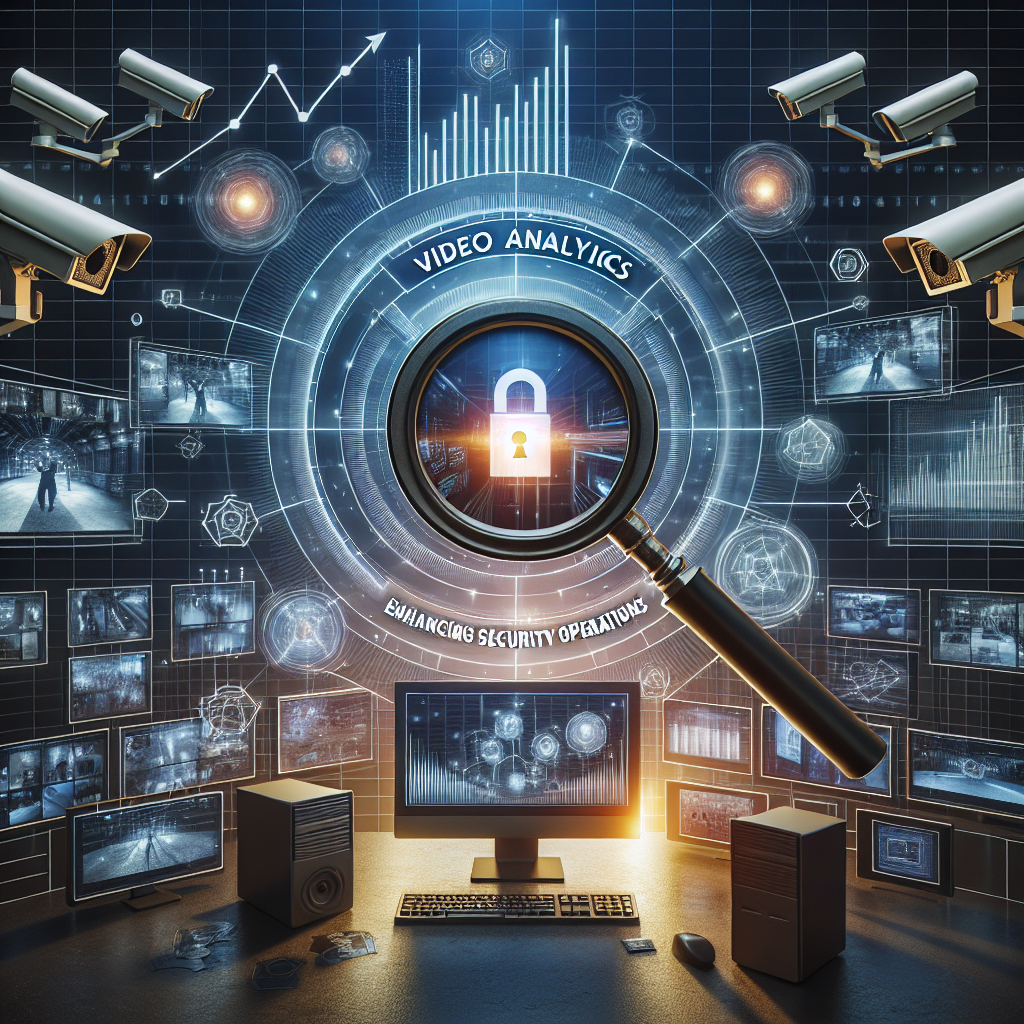In today’s rapidly evolving technological landscape, security operations must adapt to address increasingly complex safety and security challenges. Traditional surveillance methods, while necessary, often fall short in providing comprehensive security solutions. This is where video analytics comes into play, serving as a transformative tool that enhances monitoring capabilities, improves response times, and increases overall security efficiency.
Understanding Video Analytics
Video analytics refers to the use of sophisticated algorithms and artificial intelligence (AI) to analyze real-time video feeds and extracted data. This technology enables automated analysis of video footage, allowing security personnel to identify activities, detect anomalies, or trigger alerts based on predefined criteria. Video analytics can process vast amounts of video data with remarkable speed and accuracy, providing valuable insights that are crucial for proactive security management.
Key Benefits of Video Analytics in Security Operations
-
Real-Time Threat Detection: With the help of AI and machine learning, video analytics can identify suspicious behavior in real-time. Whether it’s an unauthorized entry or unusual crowd behavior, the system can immediately alert security personnel, allowing them to respond proactively rather than reactively.
-
Reduced False Alarms: Traditional surveillance systems often generate a significant amount of false alarms due to environmental factors such as animals, moving foliage, or lighting changes. Video analytics can minimize these false alerts by utilizing advanced algorithms to differentiate between regular activities and potential threats.
-
Enhanced Operational Efficiency: The integration of video analytics allows security teams to focus their attention on significant events rather than monitoring hours of footage. By filtering through data and highlighting only relevant events, analysts can make informed decisions and allocate resources more effectively.
-
Intelligent Investigations: Video analytics tools enhance post-event investigations by automating the search for specific incidents. For example, investigators can quickly locate footage of a certain vehicle or individual, saving time and valuable resources.
- Data-Driven Insights: Video analytics not only aids immediate security operations but also delivers insights over time. Organizations can analyze patterns in behavior, gather demographic insights, and assess the effectiveness of security measures, leading to continuous improvement.
Applications of Video Analytics
-
Retail Security: In retail environments, video analytics can help monitor customer behavior, reducing theft and improving store layouts. Analyzing shopper movement and interactions provides valuable insights that can enhance customer experience.
-
Transportation Hubs: Airports, train stations, and bus terminals can utilize video analytics for crowd management and monitoring suspicious activities. Tracking passenger flow and identifying anomalies can significantly improve public safety.
-
Critical Infrastructure: Energy plants, water supplies, and communication facilities require high security. Video analytics can detect breaches and monitor restricted areas, ensuring the safety of essential services.
-
Smart Cities: As cities become more interconnected, video analytics in public spaces helps monitor traffic flow, pedestrian safety, and emergency response preparedness, contributing to a holistic approach to urban security.
- Financial Institutions: Banks and financial institutions employ video analytics to monitor customer transactions, detect fraudulent activities, and ensure compliance with regulations, providing a secure environment for clients.
Implementation Challenges
While video analytics offers numerous advantages, there are challenges associated with its implementation:
-
Cost: The initial investment can be significant, encompassing hardware, software, and personnel training. Organizations must evaluate the long-term benefits against upfront costs.
-
Privacy Concerns: The use of video surveillance raises privacy issues, especially in public spaces. Balancing security needs with citizen privacy rights is a critical consideration.
-
Technical Limitations: Although AI technology is rapidly advancing, it is not infallible. Misidentifications and inaccuracies can occur, leading to potential security oversights.
- Integration with Existing Systems: Combining video analytics with legacy systems can present difficulties. Ensuring compatibility and streamlining processes require thorough planning and execution.
Future Trends in Video Analytics
-
Edge Computing: Moving processing closer to the source of data collection, edge computing allows for faster analysis of video feeds, reducing latency and bandwidth usage.
-
Predictive Analytics: Future developments may include predictive algorithms that not only analyze current data but also forecast potential risks based on historical trends.
-
Enhanced AI Capabilities: The progression of AI will lead to more sophisticated analytics, enabling systems to learn and adapt over time, thereby improving accuracy and reducing misidentification.
- Integration with Other IoT Devices: As the Internet of Things (IoT) continues to expand, integrating video analytics with other smart devices will provide a comprehensive security ecosystem that enhances situational awareness.
Conclusion
Video analytics is redefining security operations, providing organizations with the tools they need to navigate the complexities of modern threats. With the ability to monitor, analyze, and respond to security challenges in real-time, this technology offers significant advantages that traditional methods cannot match. As organizations seek to enhance their security frameworks, the integration of video analytics will undoubtedly play a pivotal role in shaping the future of safety and security management.
FAQs
1. What types of video analytics are available?
Video analytics includes facial recognition, object detection, motion tracking, crowd analysis, and license plate recognition, among others.
2. How do video analytics systems reduce false alarms?
By using AI algorithms to distinguish between normal activities and potential threats, video analytics can significantly minimize false alerts triggered by environmental factors.
3. Are there privacy concerns associated with video analytics?
Yes, privacy concerns are a primary issue when implementing video analytics, requiring organizations to establish clear policies to protect individual privacy rights while enhancing security.
4. Can video analytics be integrated with existing surveillance systems?
Most modern video analytics solutions can be integrated with legacy surveillance systems, but the level of compatibility will depend on the specific technologies in use.
5. What industries benefit most from video analytics?
Retail, transportation, critical infrastructure, financial institutions, and public services are among the industries that can significantly benefit from video analytics technology.
6. Is real-time monitoring essential for video analytics?
Yes, real-time monitoring is one of the primary benefits of video analytics, allowing security teams to respond immediately to threats as they occur.


